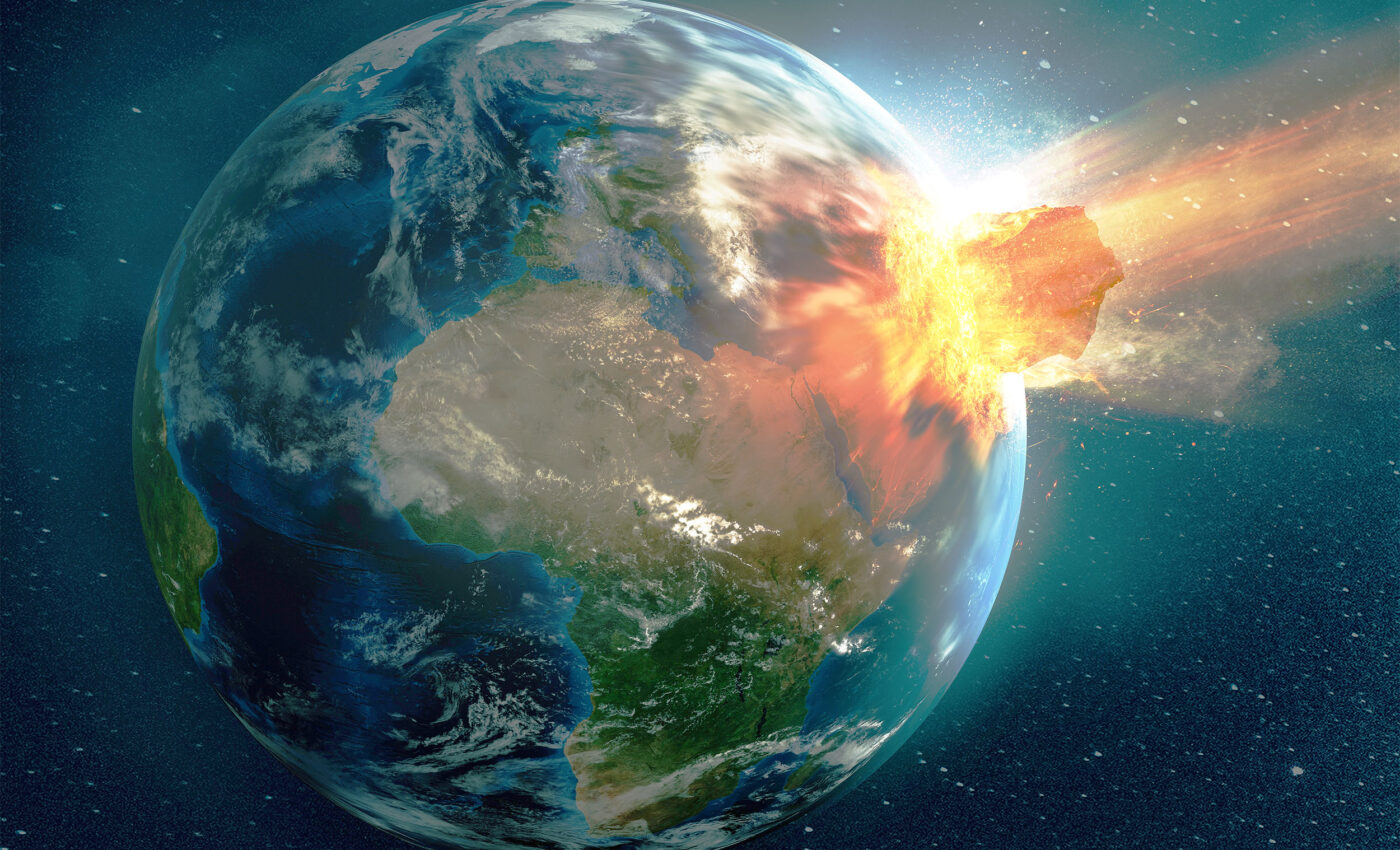
Comet impacted Earth 12,800 years ago and changed human history
An intriguing new study asserts that an ancient Syrian settlement transitioned from hunting-gathering to agriculture due to a cataclysmic comet strike.
This theory is called The Younger Dryas Impact Hypothesis. It suggests that an environmental catastrophe around 12,800 years ago triggered a dramatic shift in human subsistence methods in the village of Abu Hureyra.
The Younger Dryas
Researchers have been investigating the hypothesis that a sudden global cooling period, called the Younger Dryas, was instigated by a fragmented comet crashing into the Earth’s atmosphere.
This event dramatically altered the environment. The area shifted from a humid, forested landscape abundant with diverse food sources, to a cooler and drier one. This environmental shift prompted the inhabitants of Abu Hureyra to innovate.
James Kennett is an Earth scientist and professor emeritus of UC Santa Barbara. He highlights the settlement’s significance in archaeological records, showcasing its pivotal transition from foraging to the cultivation of barley, wheat, and legumes.
“In this general region, there was a change from more humid conditions that were forested and with diverse sources of food for hunter-gatherers, to drier, cooler conditions when they could no longer subsist only as hunter-gatherers,” said Kennett.
Abu Hureyra is now submerged
The village, now submerged under Lake Assad, was a treasure trove of ancient dietary evidence. By studying material remnants, scientists discerned the change in diet. Their diet shifted from wild legumes, grains, fruits, and berries to a dependence on domestic-type grains and lentils post-impact.
“The villagers started to cultivate barley, wheat and legumes,” Kennett noted. “This is what the evidence clearly shows.”
A millennium after the cosmic event, the famous Neolithic “founder crops” were flourishing in the region. This marked the rise of agriculture in the Fertile Crescent. Notably, there was an evident increase in drought-resistant plants, indicative of the evolving climate.
Aftermath of Younger Dryas
The aftermath of the impact not only accelerated agricultural innovation, it also resulted in noticeable shifts in population, architectural adjustments, and the beginnings of livestock domestication in the region.
But this event was not an isolated instance. Evidence found in the 12,800-year-old layers from the same period at Abu Hureyra reveals a history of extensive burning. Scientists discovered a distinct carbon-rich “black mat” layer littered with nanodiamonds, platinum, and metallic spherules. These are clear markers of extreme temperatures beyond the capabilities of the then-existing human technology.
Similar evidence of cosmic airbursts was found at the site of the ancient biblical city, Tall el-Hammam, and across 50 other locations. These regions spanned North and South America and Europe, identified collectively as the Younger Dryas strewnfield.
The markers corroborate the theory of a fragmented comet causing large-scale destruction. This included the extinction of several megafauna species and the fall of the North American Clovis culture.
The absence of ground craters, usually associated with such events, is explained by the aerial nature of the explosion. Such lower-pressure cosmic explosions, as the research suggests, manifest without leaving visible craters.
Modern analogy
To draw parallels with this cosmic phenomenon, scientists looked to recent history. Nuclear tests conducted in the 20th century, particularly the ones in New Mexico in 1945 and in Kazakhstan during 1949 and 1953, mirror the aerial explosions caused by cosmic airbursts. The shockwaves from these tests, like those from the fragmented comet, descended from the air to the Earth’s surface.
“In the papers, we characterize what the morphologies are of these shock fractures in these lower-pressure events,” Kennett said. “And we did this because we wanted to compare it with what we have in the shock-fractured quartz in the Younger Dryas Boundary, to see if there was any comparison or similarities between what we see at the Trinity atomic test site and other atomic bomb explosions.”
The scientists discovered close associations in the characteristics of the shocked quartz from the nuclear test sites and the quartz from Abu Hureyra. Specifically, they identified glass-filled shock fractures. These fractures indicate temperatures exceeding 2,000 degrees Celsius, which is above the melting point of quartz.
Shock fractures tell the story
“For the first time, we propose that shock metamorphism in quartz grains exposed to an atomic detonation is essentially the same as during a low-altitude, lower-pressure cosmic airburst,” Kennett said.
The “lower pressure” still exceeds 3 GPa or about 400,000 pounds per square inch. This is equal to stacking five 737 airplanes on a small coin. The researchers’ new protocol to identify shock fractures in quartz grains will help detect previously undiscovered airbursts. Experts believe such airbursts recur every few centuries to millennia.
Considering the evidence, the scientists assert that the discovery, “implies a novel causative link among extraterrestrial impacts, hemispheric environmental and climatic change, and transformative shifts in human societies and culture, including agricultural development.”
The compelling series of evidence from Abu Hureyra paints a dramatic picture of our ancestors’ resilience and adaptability. Faced with cataclysmic environmental changes, the prehistoric settlers transformed their survival strategy, laying the foundations for modern agriculture.
This research not only sheds light on ancient human history, but also provides a perspective on the profound ways cosmic events can shape the course of life on Earth.
A series of four full papers were published in the journal Science Open: Airbursts and Cratering Impacts.
—
Like what you read? Subscribe to our newsletter for engaging articles, exclusive content, and the latest updates.
—
Check us out on EarthSnap, a free app brought to you by Eric Ralls and Earth.com.













